Bridge Technologies January Blog Post
January 31, 2022
Where We Have Been
“Dunno where I’m going, Dunno where I’ve been”
When guitar legend Rory Gallagher sang that, he obviously hadn’t been keeping meticulously detailed accounts of his history like we have in the Bridge Blog. ‘Cause we know exactly where we’ve been. And we’ve got a good idea of where we’re going.

Don’t look back (in anger)
If you’re the kind of person that still finds themselves shocked that 2050 is closer to us now than the original release of Jurassic Park, you’ll probably be able to relate to this blog. The fact is, life can become a little bit of a blur, and it’s difficult to keep it all in order. And the same goes for business.
Sure, there are annual accounting reports, data-driven marketing stats, tedious chains of mind-numbing emails. But they don’t necessarily give that intangible insight into the rich tapestry of business across the years – as it evolves, changes and rolls with the punches of a fast flowing market.
Which is why we’re so pleased to have our News and Blogs page on our website. Whilst we often use our December or January blogs to recap the progress we’ve made over the course of the year (in part to show off, and in part because we’re really immensely proud of the progress we’re making), this year we thought we’d dig back a little deeper.
The Bridge Technologies Timeline
Records on our own news and blog page go back to 2012. We have a fair few internal bits and bobs knocking about the office from before then, but there’s a surprising dearth of information about what got us all started. An article we wrote recently for the SCTE Journal about the roots of monitoring in broadcast – with a little bit of our own personal history thrown in, inspired this blog.
Interestingly though, our wider internet presence was also fairly undeveloped. A not-exactly-comprehensive google unearths an interesting interview from SatMagazine as far back as 2012, where the biggest concern on our radar was the stability of the euro and European markets in general… oh if only we’d had a crystal ball!
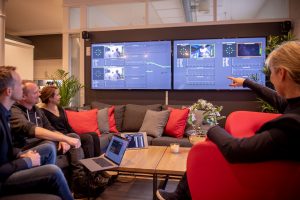
Amazing to think that was all a full decade ago. But even more amazing is that in 2012, we were already eight years old. An archaeological dig through the internet yields more of our history before then, though we thought we’d be here all day if we didn’t put down our shovels, brushes and buckets.
And, we’d also argue it might be around about 2012 where the way we were perceived in the industry began to gain some serious pace. We started off with a pretty visionary perspective when it came to the role of IP in the broadcast industry – but like any visionary, it can be a bit tricky to find recognition in your time. There’s a small chance you’ll be labelled ‘the loony in the corner’.
And whilst we carried some serious heft in terms of the expertise of our founding members, and we were by no means dismissed in the market, our ‘IP is the future of broadcast’ message was sometimes met with little more than an indulgent smile and a chuckle.
But 2012 is perhaps the year when the industry stopped saying ‘don’t mind them, and started to say ‘do you know what, I think they could be on to something’. With Netflix just hitting UK and European shores, suddenly the impending IP expansion was an unavoidable inevitability.
From there, momentum gathered pace. But what exactly do the records show we were up to?
2012: We gathered up some new Business Partners – especially in the expansion of our Asian market, and our good friends SHM also joined us to enhance our presence in the German market.
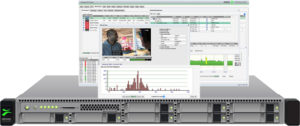
We also started to really push forward in the field of OTT; the VB330 added a Bulk OTT engine and we launched the portable VB12-RF probe (now NOMAD), and as a result the awards really started to roll in; Streaming Media Europe, the TVTechnology STAR award, and SCTE, to name but a few.
2013 and 2014: 2013 started with a bang: we introduced the PocketProbe – allowing monitoring to be achieved from anywhere in the world (well, anywhere with 3G). This was a real head turner – nothing really drives home just how much flexibility IP provides like the ability to demo, real-time network monitoring just by getting your mobile out of your pocket.
For all of our probes – including the VB273 and VB288 – we made both incremental and fundamental improvements. One of the big ideas that we were pushing – and continue to push – is the idea that Quality of Experience is as vital, if not more vital, than Quality of Service: it’s all very well discovering your network is doing what you think it should be doing according to lots of geeky engineering metrics– but what if your customer doesn’t!? What if the fundamental experience they are having is undermining your reputation with each passing minute?
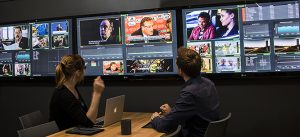
Content extraction is the big tool here; seeing what the final set of eyes sees, not the image you’ve sent out on a wing and a prayer… And the integration of content extraction into our key probes was the big focus for some of our major industry awards in 2014.
Our recognition of the centrality of QoE seems pretty obvious now (as, of course, does our IP mantra). But moving into 2014, we were starting to get some real attention for the way we were promoting monitoring not as some niche engineering concern, but something that was fundamental to the strategic decisions underpinning the business model of organisations as a whole. From in-the-moment routing decisions to annual boardroom contemplations, Bridge was showing just how important monitoring metrics were about to become – especially in an industry where with each passing year, one extra second of latency or delay meant one extra customer lost. Don’t bolt it on, design it in!
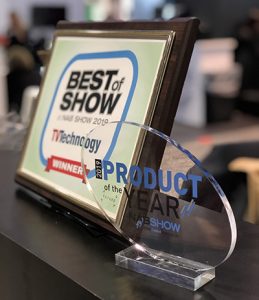
Resultantly, more and more eyes were becoming fixed on us: both NAB and IABM recognised us as ‘game changers’ by the end of 2013, and reiterated that position in 2014. There could be no doubt, Bridge Technologies were becoming real movers and shakers.
Oh, and we said hello to Canal Cable as our French Business Partners.
2015 and 2016: These years saw a real entrenchment of our position; taking technologies that were breakthrough and now refining and adding to them to produce something even more robust, reliable and increasingly crucial to an effective broadcast operation. The constant addition of standards and functionalities sought to deepen the value that our technology provided to broadcasters functionality, range of standards covered, reliability and efficiency and versatility. Unlike certain big names in certain big industries (pointing no fingers, *cough* phone manufactures), we don’t bring out a new model every year just for fun. Instead, we work to constantly refine and improve, offering the best possible product to our customers on an ongoing basis.
Kinda shows that looking back doesn’t just show you what’s changed, it show’s what’s stayed the same too. And our philosophy on continuous improvement has been pretty consistent – as has our approach to creating meaningful, intuitive, visual data, which was in evidence in 2016 from our launch of our IBC Innovation Award-winning Remote Data Wall, and a little later our NAB show-winning Instrument View on the VB440.
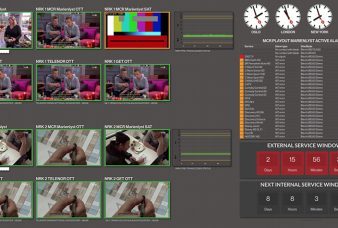
What else for 2015 and 2016? Well, this was the year the NOMAD hit the scene. And our reach – ever supported by our growing network of business partners – expanded into MENA and Asia Pacific (Hi Techtel), and consolidated in the East. We were officially on a global IP mission.
2017 – 2018: These were important transitional years for the industry too. Recognition of the importance of IP was growing – it was starting to be framed as ‘an inevitability’, but one that still carried significant risks, problems and complications. To push it forward, it would really need to be spearheaded by pioneers who knew the technology inside out, and who had the experience and creative innovation needed to understand these challenges and address them face on.
Er, that’d be us then, no?
But even as we increasingly added to and led the development of industry-wide knowledge in the field of IP – becoming central contributors and speakers at the IBC annual IP showcase – we still had another fire to fight on a different front. Putting IP aside for a moment, we still needed to convince the market that customer experience and operational expenses could all be dramatically improved with effective monitoring, regardless of the underpinning technological infrastructure.
So as well as banging the IP drum yet more loudly, we were still providing monitoring solutions for every type of transport; SDI, ASI, satellite, terrestrial – you name it, we could help you monitor it.
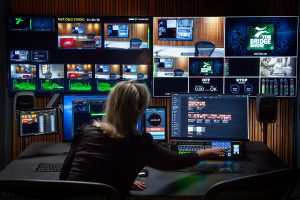
It’s kind of tough work working as both an innovative market leader whilst still caring for market laggards (something that we’ve talked about before in one of our blogs . But our efforts on both fronts saw us close out the year with a heavy sprinkling of innovation awards and increasingly more prominent recognition in the industry.
2019 – 2020: If you google ‘When did IP broadcast hit the mainstream’, it’s really around 2019 that articles announcing ‘the future is here’ start cropping up. And a fair few of them make reference to us whilst they’re at it.
At this point, it’s official, everybody wanted a piece of the IP dream. But that’s easier said than done. Remember when we said that just a few years ago there were polite smiles as we pitched the IP revolution, whilst many continued to invest heavily in ‘traditional’ infrastructure? Well now these companies had hefty legacy systems that they were going to continue to need to extract value from in order to appease the accounting Gods. There was no money in the budget for an IP overhaul, and even those really committed to making the move would have to so in a piecemeal approach.
So with much of the industry looking to start ‘hybridising’ their networks, there were going to be complex times ahead in finding a way to monitor potentially disparate elements effectively. But Bridge is never one to shy away from a challenge.

Resultantly, we launched our Integrated Services Monitoring service (ISM). We already had a full suite of probes needed to monitor any kind of network – but the real key to ISM was bringing our expertise to operations so that these could be deployed in a fully joined-up manner – coordinating, speaking to each other seamlessly, and providing meaningful data in a single, easily accessible location.
2019 was also the year when we would start yelling ‘Remote Production’ at the top of our lungs – not least because our VB440 and Widglets™ were making waves. It was also the year when we’d celebrate our 15th birthday in incredible style, and go BIG with 230 sqms in Hall 1 at IBC.
2019 was a friendly year too. We joined the SRT alliance, and not long after that the GV Technology alliance.

Oh, also, kind of a big global thing happened during 2020, but we won’t dwell on that…
2021 – 2022:…except we have to, because that big thing kept happening – and it rocked the whole world, both real and business. Perhaps most relevantly for us, it fundamentally cemented the importance of IP for absolutely everything the world does – including consuming content.
Marketing wise, this global upheaval led us to one of our most creative endeavours – the Bridge Show . Business-wise, it saw unparalleled demand for what we were doing: by having worked so tirelessly in the previous decade to set a knowledge and awareness base in the market, key players had been primed to understand just how important effective IP use and monitoring is, whether it’s in production, distribution or any other aspect of broadcast. And with such a game-changing surge in IP-based broadcast consumption, even those who were initial sceptics were now clamouring for our knowledge.
And on a technological level? That concept of continuous improvement was still driving us – whether that be with our Audio Meter, HDR and JPEG XS monitoring capabilities… or the host of other incremental improvements our engineers have been making to retain the Bridge Technologies reputation as pioneers on the forefront of IP technology.
And 2022? Well, it’s only just begun. But we have big things in store – just watch this space.